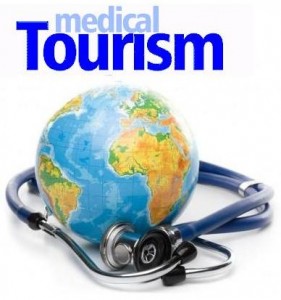By Rose O. Sherman, EdD, RN, FAAN
The other day, one of my nurse manager students told me that her CEO had shared with them that a rising trend in medical tourism was threatening the viability of some of their most financially lucrative service lines. Like many nurses, she seemed surprised to learn this. Her view of her organization’s competitors had been previously limited to other hospitals within her geographic area. This trend is quickly changing with the rise of medical tourism both inside and outside the United States.
Historically, medical tourism has been defined as patient movement from highly developed nations to less developed areas of the world for medical care by bypassing services offered in their own communities. This definition is changing as there is now an increasing amount of medical tourism occurring within the United States. Companies and insurers are beginning to take advantage of the numerous cost saving opportunities that exist beyond hospitals in communities where their patients live and work. It can be more economical with no compromise in outcomes to send a patient to another state or to another country in the world for care.
1. Medical Tourism is on the Rise
While true figures on medical tourism are difficult to quantify, Patients without Borders estimates that 5 million patients sought care outside their own countries in 2011. They anticipate this market will grow by 25-35% as the world’s population grows and there are challenges with access to quality care. The top destination countries were Brazil, Costa Rica, India, Korea, Malaysia, Mexico, Singapore, Taiwan, Thailand and Turkey. Visitors from the United States seeking care overseas usually went for cosmetic surgery, dentistry, orthopedics, reproductive/IVF, weight loss surgery and health screenings. Consider the following report from a Forbes magazine editor about his experience.
“I visited Bangkok Thailand last week and was encouraged by a friend to get a full check up at the Bumrungrad International Hospital. I generally don’t like hospitals but I had a very positive experience at a fraction of the U.S. cost and at 5x the speed.I stayed at a suite in the St. Regis, a brand new luxury hotel, for less than $200 a night. I received a full medical exam for less than $1,000, including a last-minute MRI. A similar stay at the Four Seasons in Westlake, CA with a state of the art medical and longevity center probably would have been much more expensive and time consuming by a factor of three.”
2. Some Employers and Insurers are Promoting Medical Tourism
Some employers and insurers are looking for ways to decrease their costs while maintaining quality. Negotiating contracts with health systems outside their immediate geographic area sometimes referred to as domestic medical tourism is a growing strategy. Some recent examples include Lowes the national home-improvement retailer who has a three-year deal with the Cleveland Clinic to send willing employees and their dependents from throughout the country there who need treatments such as open-heart surgeries, valve repairs and pacemakers. BridgeHealth Medical, based in Greenwood Village, Colo., began offering domestic travel programs to small and mid-size insured employers last year. The firm links workers to a network of about 20 hospitals and surgical centers in the U.S., where it has negotiated prices for orthopedic, cardiac and other types of surgery.
3. The Affordable Care Act could Accelerate the Trend
One of the challenges with the Affordable Care Act may be patient access to care. Adding up to 32 million patients to an already strained health care could result in care delays in some communities ,especially rural settings with shortages of primary and sub-specialty physicians. Rudy Rupak, founder and CEO of Planet Hospital, the world’s first and largest medical tourism company believes that the Affordable Care Act could mean more business for both foreign and domestic medical tourism. Health Reform might force more interest in competition amongst health care providers state-by-state, which in turn creates motive for health care seekers to become migrant.
There issues and problems with both domestic and foreign medical tourism. Many patients are understandably reluctant to leave their communities for care. Follow-up care can sometimes be difficult to arrange. There are quality concerns in some settings. But as a trend, medical tourism is here to stay, and falls into the category of what Clayton Christensen describes as a “disruptive innovation). While it was once believed that health care is local, we are now seeing some aspects of care following the same trends of global outsourcing seen in other industries. It is a trend for nurse leaders to pay close attention to as we move into this new era of health reform.
© emergingrnleader.com 2012



 LinkedIn
LinkedIn Instagram
Instagram